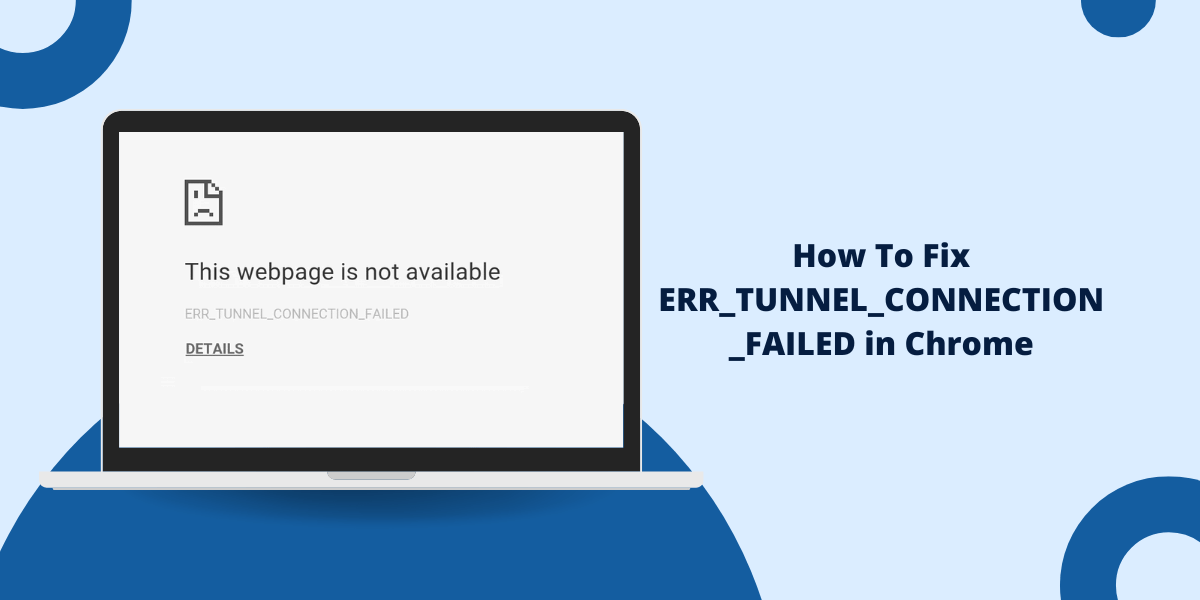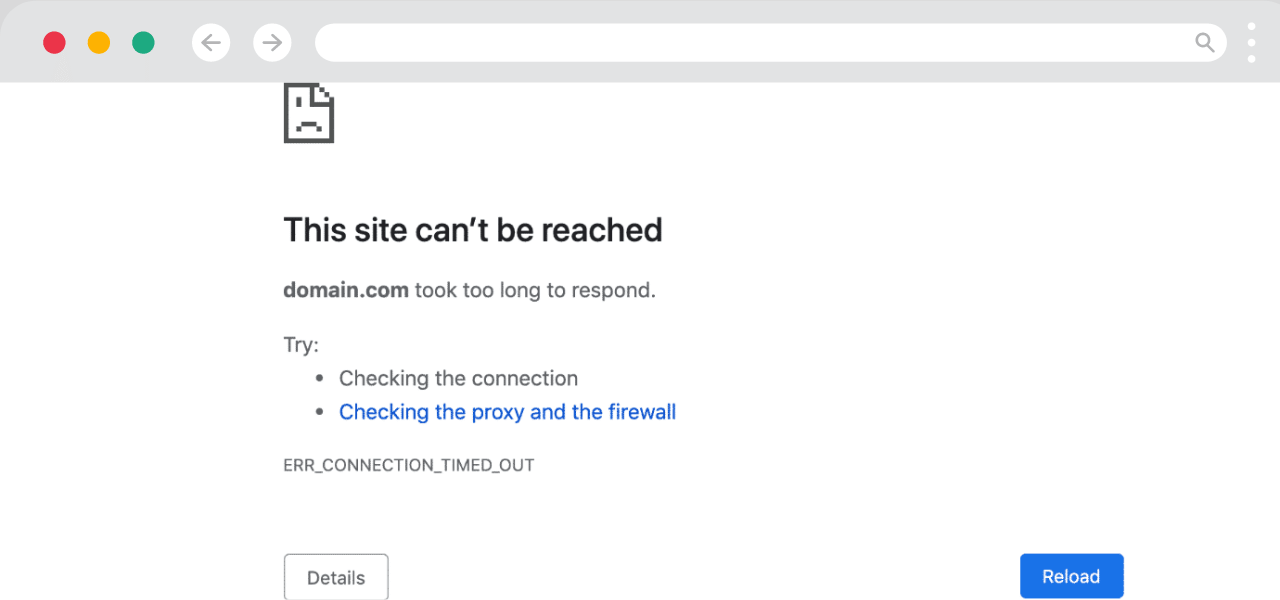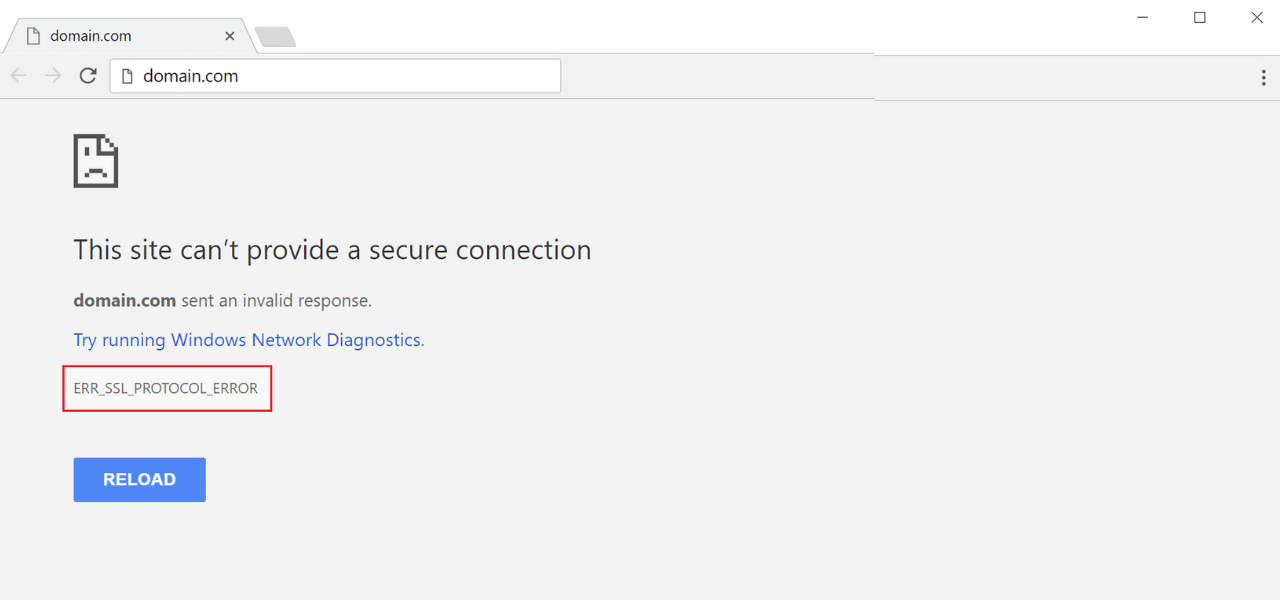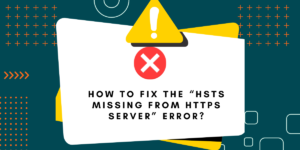Steps to Resolve ERR_TUNNEL_CONNECTION_FAILED Error
Seeing the ERR_TUNNEL_CONNECTION_FAILED error in Google Chrome can be frustrating. It prevents you from accessing websites and online content. This error indicates a problem with the tunnel connection Chrome uses to communicate with websites.
Several different issues can trigger this error, including problems with Chrome itself, network connection issues, firewall or antivirus software interference, and more. Thankfully, in most cases, this error can be easily fixed with some simple troubleshooting steps.
In this comprehensive guide, we will cover the most common causes and solutions to fix the ERR_TUNNEL_CONNECTION_FAILED error in Chrome on both Windows and Mac operating systems.
Key Takeaways
- ERR_TUNNEL_CONNECTION_FAILED error usually occurs due to firewall or antivirus software blocking Chrome.
- Disabling the firewall and antivirus temporarily can help determine if they are causing the issue.
- Chrome settings like proxy, DNS, and Chrome extensions can also cause this error.
- Resetting Chrome settings to default, using Google DNS servers, and removing suspicious extensions are some fixes.
- Network issues like corrupt system files, MTU size mismatch, or bad cables can also trigger this error.
- On Windows, running Network reset, DISM, and SFC scans can help fix corrupted system files.
- Changing MTU size, replacing network cables, and updating network drivers may be required.
- As a last resort, uninstalling and reinstalling Chrome with the latest version can resolve persistent issues.
What Causes Causes of ERR_TUNNEL_CONNECTION_FAILED Error
Before we look at how to fix this error, let’s first understand what can cause the ERR_TUNNEL_CONNECTION_FAILED message to appear in Chrome.
- Firewall or Antivirus Software Interference
- Issues with Chrome Settings
- Problems with Network Equipment
- Network Drivers and Settings
- Corrupted System Files
- Chrome Update Issues
Firewall or Antivirus Software Interference
One of the most common reasons you may see this error is that the firewall or antivirus software is blocking Chrome connections. Both firewalls and antivirus programs can sometimes detect Chrome connections as suspicious and block communications, leading to this error message.
Issues with Chrome Settings
Various Chrome settings, such as proxy configurations, DNS settings, and installed extensions, can also be potential triggers for this error. For example, having an incompatible proxy set or a Chrome extension that modifies network requests could cause issues.
Problems with Network Equipment
Faulty network cables, routers, modems, or any other intermediary network hardware could also be responsible for the connection error in Chrome. This can happen if they need to be configured properly for Chrome traffic.
Network Drivers and Settings
Outdated, corrupted, or incompatible network drivers and adapter settings on your computer can lead to problems with tunnel connections in Chrome. Other causes include incorrect MTU size, disabled IPv6 connectivity, and DNS server failures.
Corrupted System Files
Corrupted operating system files, network configurations, host file issues, or problems with the TCP/IP stack could throw this error in Chrome. Malware infections sometimes also corrupt system file settings.
Chrome Update Issues
In some cases, a corrupt installation or incomplete update of the Chrome browser itself could also be the reason for this connection failure.
Now that we know some of the potential reasons let’s look at the steps to resolve this error on both Windows and Mac systems.
9 Easy Steps to Fix ERR_TUNNEL_CONNECTION_FAILED Error in Chrome on Windows
Here are the top troubleshooting steps to try and fix the ERR_TUNNEL_CONNECTION_FAILED error in Chrome on a Windows PC:
- Temporarily Disable Firewall and Antivirus
- Reset Chrome Settings to Default
- Use Google DNS Servers
- Remove Recently Added Extensions
- Scan and Repair Corrupted System Files
- Reset Network Settings
- Update Network Adapter Drivers
- Change MTU Size
- Uninstall and Reinstall Chrome
Step #1 Temporarily Disable Firewall and Antivirus
As firewall and antivirus tools are common culprits, first try disabling them temporarily to determine if that fixes the Chrome error. Follow these steps:
- Open the Windows Security settings on your computer.
- Under Virus & Threat Protection, turn off Real-Time Protection.
- Under Firewall & Network Protection, turn off the firewall options for both public and private networks.
- Launch Chrome and check if the error appears. If the issue is resolved, you know the culprit is firewall or antivirus blocking.
Once confirmed, you can re-enable protection and exclude Chrome from being blocked by adding it to the allowed program list in firewall and antivirus settings. This should prevent the error from occurring again.
Step #2 Reset Chrome Settings to Default
Resetting Chrome to factory default settings can help resolve browser issues caused by problematic extensions, proxies, caching problems, and other settings.
Follow these steps:
- Open Chrome and click on the three vertical dots icon in the top right corner to open settings.
- Scroll down and click on Advanced.
- Under Reset Settings, click on Restore settings to their original defaults.
- In the confirmation prompt, click Reset Settings. This will reset all Chrome settings.
- Once done, restart Chrome and see if the error is gone.
Step #3 Use Google DNS Servers
Using corrupted or incompatible default ISP-assigned DNS servers can trigger connection errors like this. Changing to known-good DNS servers like Google public DNS can resolve them.
Follow these steps to switch to Google DNS:
- Go to Control Panel -> Network and Internet -> Network Connections.
- Right-click on your active network adapter and select Properties.
- Click on Internet Protocol Version 4 (TCP/IPv4).
- Change the preferred and alternate DNS server to 8.8.8.8 and 8.8.4.4 and click OK.
- Launch Chrome and check if this fixes the error.
Step #4 Remove Recently Added Extensions
Though rare, a buggy newly installed Chrome extension could also be responsible for the connection failure. Try removing all extensions installed recently one by one and checking if the error stops.
- In Chrome, type in chrome://extensions/ in the address bar and hit enter.
- This will open the extensions page. Look for any newly added extensions.
- Click on the Remove button below each extension to uninstall them.
- Relaunch Chrome after removing each extension and verify if the error appears.
This should help you identify any problematic extensions causing the error. You can also turn off all extensions temporarily and check if that helps resolve the issue.
Step #5 Scan and Repair Corrupted System Files
Corrupted Windows system files required for network connectivity could also throw this error. Run scans like DISM and SFC to diagnose and repair corrupted files:
- Open Command Prompt as Administrator.
- Type sfc /scannow and hit enter to run the System File Checker scan.
- Once that completes, run DISM scan by typing DISM /Online /Cleanup-Image /RestoreHealth.
- Restart your computer once both scans are complete.
- Launch Chrome and see if the connection error has been fixed after the scans.
Step #6 Reset Network Settings
Resetting all network adapter settings to the default factory state may help resolve network issues causing the Chrome error:
- Go to Settings -> Network & Internet -> Status -> Network reset.
- Click Network reset again to confirm.
- Wait for the process to complete and restart your computer.
- Test in Chrome again if the error is resolved.
Step #7 Update Network Adapter Drivers
Outdated or incompatible network drivers could also trigger connectivity issues in Chrome. Updating to the latest drivers from your device manufacturer is recommended:
- Open Device Manager and expand the Network Adapters section.
- Right-click on your network adapter and select Update driver.
- Click Search automatically for updated driver software.
- Follow on-screen instructions to update drivers. Restart once done.
- Open Chrome and check if ERR_TUNNEL_CONNECTION_FAILED is fixed.
Step #8 Change MTU Size
MTU or maximum transmission unit size mismatch between your Network and Chrome can also lead to this error. Changing MTU may resolve it:
- Go to Command Prompt as admin and type netsh interface ipv4 show subinterfaces
- Note down the MTU size for your connection. Usually, it is 1500.
- Type netsh interface ipv4 set subinterface “NETWORK NAME” mtu=1420 store=persistent
- Replace NETWORK NAME with the actual network name from the previous command output.
- Set MTU size to 1420 or 100 lower than the existing value. Restart your PC after changing.
- Open Chrome and visit any website to see if the error is gone.
Step #9 Uninstall and Reinstall Chrome
If all the above steps fail to resolve the issue, try uninstalling and reinstalling the latest version of Chrome as a last resort:
- Open Control Panel -> Programs -> Uninstall a program.
- Uninstall all versions of Google Chrome.
- Download and install the latest Chrome version from google.com/chrome.
- Once installed, open Chrome and check if the error persists.
A clean reinstall should clear out any corrupted files or registry entries causing problems. This may fix the stubborn ERR_TUNNEL_CONNECTION_FAILED error.
8 Easy Steps to Fixing ERR_TUNNEL_CONNECTION_FAILED Error on Mac
For Mac users facing this same error in Chrome, here are the top troubleshooting steps to try:
- Check Firewall and Security Software
- Reset Chrome Settings and Extensions
- Renew DHCP Lease
- Flush DNS Cache
- Use Google public DNS
- Check Network Hardware and Cables
- Update Network Adapter Drivers
- Uninstall and Reinstall Chrome
Step:1 Check Firewall and Security Software
Just like on Windows, firewalls and endpoint security tools on your Mac could block Chrome and cause this error. As a first step, disable your firewall and security software temporarily and test in Chrome.
If the issue is resolved, add Chrome to the allowed apps list in the firewall or security software. You may also have to create rules to enable Chrome to connect through all required ports and protocols.
Step:2 Reset Chrome Settings and Extensions
Problematic proxy settings, extensions, or other invalid configurations could cause Chrome connection issues on Mac as well. Reset Chrome to default settings:
- Click Chrome menu -> Preferences -> Advanced
- Under Reset Settings, click Restore settings to their original defaults
- Confirm reset when prompted
- Restart Chrome and test if the error is gone
It would help if you also tried temporarily disabling all extensions to isolate any problem extensions causing this.
Step:3 Renew DHCP Lease
Invalid DHCP assigned DNS server or IP address information could also be a factor for Chrome tunnel connection failures on Mac. Renewing the DHCP lease resets this:
- Go to System Preferences -> Network
- Select your active network connection and click the gear icon
- Choose Renew DHCP Lease
- Confirm renewal process when prompted
- Test in Chrome if the error still appears
Step:4 Flush DNS Cache
Corrupted DNS cache could lead to DNS resolution failures causing Chrome tunnel errors. Flushing it can help:
- Open Terminal and run the command: sudo dscacheutil -flushcache
- Also run: sudo killall -HUP mDNSResponder
- Restart your Mac and try Chrome to see if the error has been resolved.
Step 5: Use Google public DNS
Switching to known good public DNS servers like Google DNS may help if DNS issues are responsible for the error:
- Go to System Preferences -> Network -> Advanced -> DNS
- Replace any existing DNS server entry with 8.8.8.8 and 8.8.4.4
- Click OK and Apply changes
- Test Chrome to see if using Google DNS resolves the connection failed error
Step:6 Check Network Hardware and Cables
Check for loose or faulty cables, failing network adapters, routers, modems, etc., that could disrupt the tunnel connection. If needed, replace any suspicious hardware with known-good alternatives.
Step:7 Update Network Adapter Drivers
Updating to the latest Ethernet/Wi-Fi adapter drivers can also help resolve lingering network issues:
- Open Finder -> Applications -> Utilities -> System Information
- Click on Network in the left sidebar and find your adapters
- Google the adapter names and visit the manufacturer’s website
- Download and install the latest driver versions where available
- Restart your Mac and check Chrome
Step:8 Uninstall and Reinstall Chrome
If you have tried all other troubleshooting steps, download the latest Chrome version package from google.com/chrome and reinstall it:
- Drag the Chrome icon from the Applications folder to Trash to uninstall
- Empty Trash to completely remove any traces of the existing version
- Download the new installer package and run it to install Chrome
- Once installed, open Chrome and visit any website to check if the error persists
This should eliminate any corrupted files related to Chrome installation causing the tunnel connection failure.
Final Thoughts
This detailed guide covered the bulk of causes and solutions for fixing the ERR_TUNNEL_CONNECTION_FAILED error in Google Chrome for both Windows and Mac users. While the mistake may seem annoying at first, systematically going through the suggested troubleshooting steps should help identify and resolve the underlying connection problem.
Some key things to keep in mind are updating network drivers, resetting adapter settings, verifying DNS and firewall rules, checking network hardware integrity, and reinstalling Chrome as a last resort.
FAQs about ERR_TUNNEL_CONNECTION_FAILED Error
Here are some frequently asked questions about the ERR_TUNNEL_CONNECTION_FAILED error in Google Chrome:
Why am I suddenly getting an ERR_TUNNEL_CONNECTION_FAILED error in Chrome?
Some common reasons you may suddenly start seeing this error include:
- Recent firewall or security software updates blocking Chrome
- New Chrome extension causing interference
- Chrome or network adapter driver updates introducing a bug
- Faulty network hardware like routers or modems failing
- DNS server failures and ISP network issues
Does the ERR_TUNNEL_CONNECTION_FAILED error mean my internet is not working?
Not necessarily. This error specifically relates to the Chrome browser only. If you can access the internet fine in other browsers or apps, then your overall internet is likely working fine. In such cases, the problem would be isolated to just Chrome.
Why does ERR_TUNNEL_CONNECTION_FAILED happen on some sites but not others?
In some cases, you may see the error appear only for certain websites but not everywhere. This can happen when there is a firewall or network incompatibility issue with how those specific sites establish connections using the Chrome proxy tunnel.
Adding the affected sites to allowed lists or fixing underlying network configs can resolve site-specific occurrences of this error.
How can I tell if my antivirus is causing the ERR_TUNNEL_CONNECTION_FAILED error?
An easy way to test is to disable your antivirus completely and then temporarily access Chrome. If the error goes away after disabling the antivirus, then you know that it is interfering with Chrome’s connections.
You can then add Chrome as an exception within your antivirus settings to prevent the software from blocking its network tunnel. This resolves the error without fully disabling your antivirus.
Should I delete Chrome if I keep seeing ERR_TUNNEL_CONNECTION_FAILED?
Deleting and reinstalling Chrome should only be done as a last resort after trying all standard troubleshooting steps involving extensions, settings, network configs, etc.
In cases of corrupted installation or conflicting software, a clean install of the latest Chrome version can fix the error.
How can I prevent ERR_TUNNEL_CONNECTION_FAILED from happening again in Chrome?
Some things you can do to prevent future occurrences of this error include:
- Adding Chrome as an allowed app in firewalls and security tools
- Being cautious before installing unknown Chrome extensions
- Periodically renewing DHCP and DNS settings and flushing caches
- Keeping network adapter drivers updated
- Maintaining good internet connectivity and network infrastructure
Does ERR_TUNNEL_CONNECTION_FAILED affect incognito mode in Chrome?
Incognito mode in Chrome uses the same Chrome tunnel connection method as regular Chrome windows and tabs. As such, the ERR_TUNNEL_CONNECTION_FAILED error can also appear when you are browsing in incognito mode.
The same connection troubleshooting steps outlined in this guide will be applicable to fix the error occurring in incognito windows as well. It is not specific to just standard Chrome instances.

Priya Mervana
 Verified Web Security Experts
Verified Web Security Experts
Priya Mervana is working at SSLInsights.com as a web security expert with over 10 years of experience writing about encryption, SSL certificates, and online privacy. She aims to make complex security topics easily understandable for everyday internet users.



